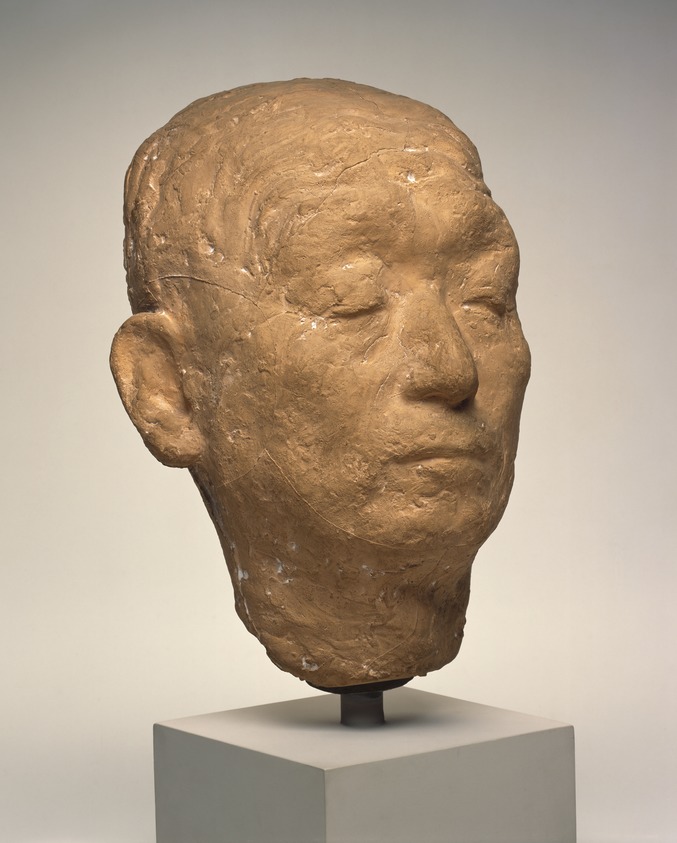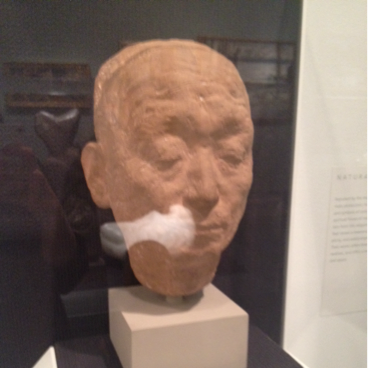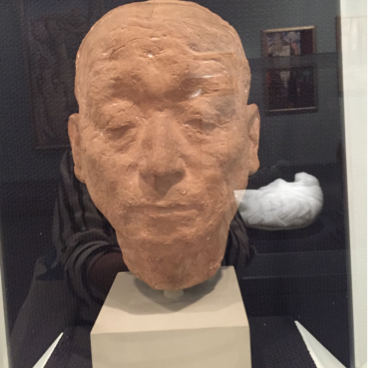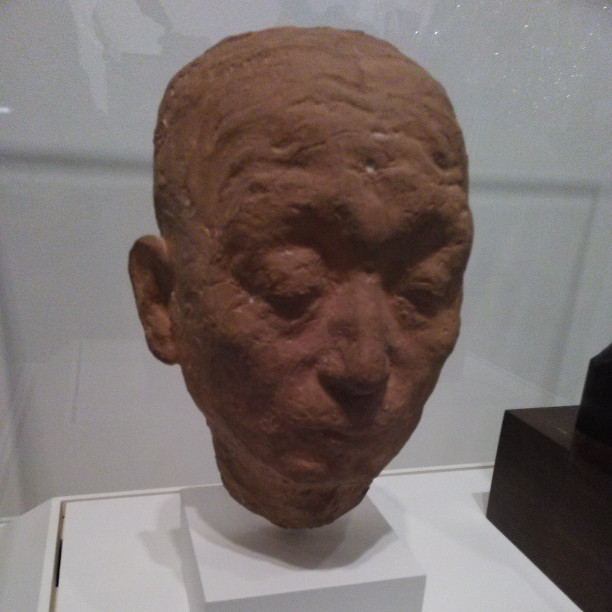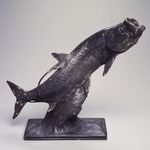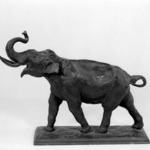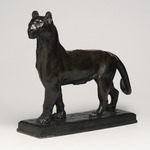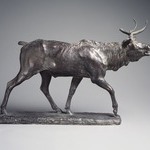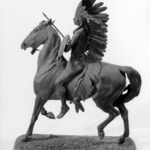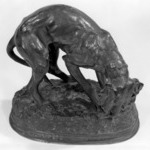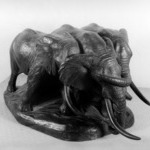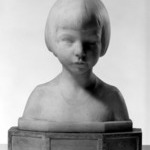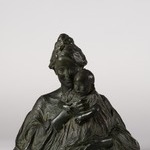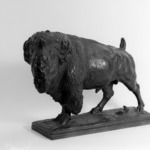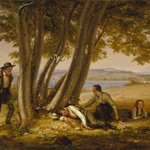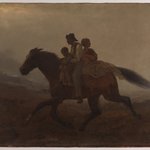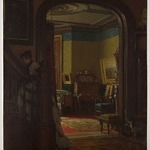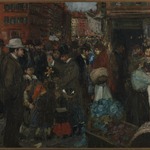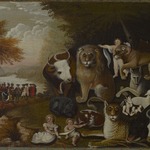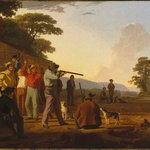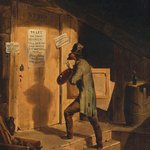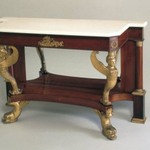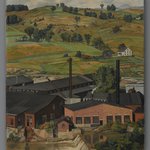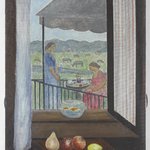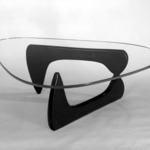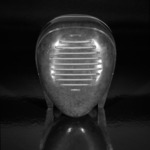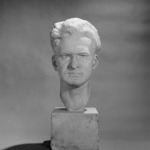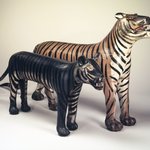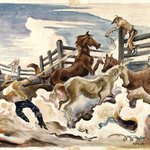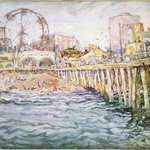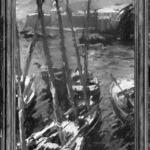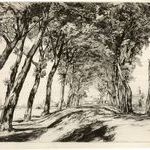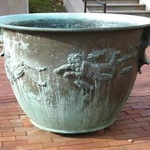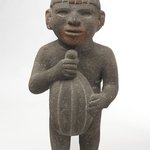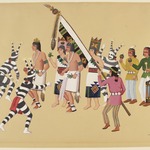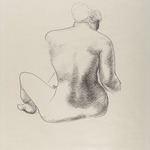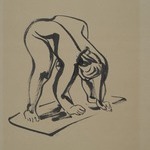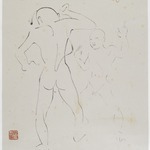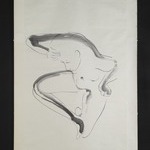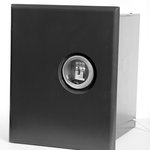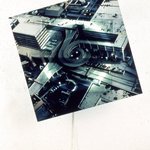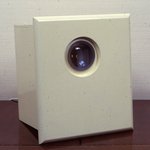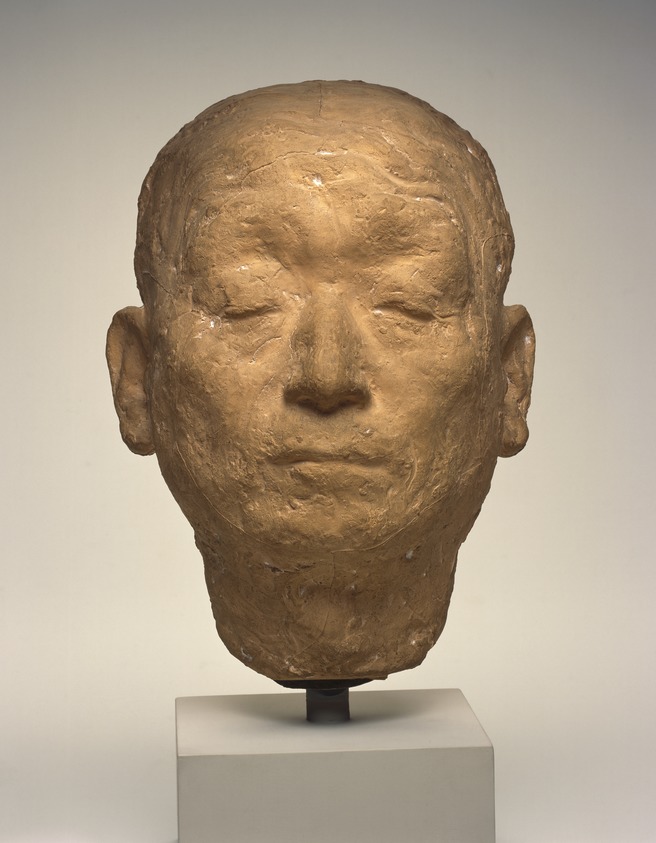
This image is presented as a "thumbnail" because it is protected by copyright. The Brooklyn Museum respects the rights of artists who retain the copyright to their work.
My Uncle
Isamu Noguchi
American Art
The surface of this head is lifelike, but its expression may lead us to contemplate the psychic life at play behind the closed eyes. The sculptor Isamu Noguchi modeled this likeness of his uncle Takagi, a Buddhist priest, in gratitude for his hospitality during the artist’s visit to Tokyo in 1931. One of three casts from the original clay sculpture, the head suggests the “closed-eye vision” achieved through meditation.
MEDIUM
Terracotta, plaster
DATES
1931
DIMENSIONS
16 1/2 × 9 × 8 in. (41.9 × 22.9 × 20.3 cm) (show scale)



SIGNATURE
Incised at back of neck, proper left: "1931 / ISAMU"
COLLECTIONS
American Art
ACCESSION NUMBER
42.339
CREDIT LINE
Dick S. Ramsay Fund
CATALOGUE DESCRIPTION
Head of man facing frontally with eyes closed, loosely modeled surface. Molding seams are visible and there is plaster trapped in many of the recesses, presumably from the orignal mold.
Condition: Good.
EXHIBITIONS
MUSEUM LOCATION
This item is not on view
CAPTION
Isamu Noguchi (American, 1904–1988). My Uncle, 1931. Terracotta, plaster, 16 1/2 × 9 × 8 in. (41.9 × 22.9 × 20.3 cm). Brooklyn Museum, Dick S. Ramsay Fund, 42.339. © artist or artist's estate (Photo: Brooklyn Museum, 42.339_front_SL1.jpg)
IMAGE
overall, 42.339_front_SL1.jpg. Brooklyn Museum photograph
"CUR" at the beginning of an image file name means that the image was created by a curatorial staff member. These study images may be digital point-and-shoot photographs, when we don\'t yet have high-quality studio photography, or they may be scans of older negatives, slides, or photographic prints, providing historical documentation of the object.
RIGHTS STATEMENT
© artist or artist's estate
Copyright for this work may be controlled by the artist, the artist's estate, or other rights holders. A more detailed analysis of its rights history may, however, place it in the public domain.
The Museum does not warrant that the use of this work will not infringe on the rights of third parties. It is your responsibility to determine and satisfy copyright or other use restrictions before copying, transmitting, or making other use of protected items beyond that allowed by "fair use," as such term is understood under the United States Copyright Act.
For further information about copyright, we recommend resources at the United States Library of Congress, Cornell University, Copyright and Cultural Institutions: Guidelines for U.S. Libraries, Archives, and Museums, and Copyright Watch.
For more information about the Museum's rights project, including how rights types are assigned, please see our blog posts on copyright.
If you have any information regarding this work and rights to it, please contact copyright@brooklynmuseum.org.
RECORD COMPLETENESS
Not every record you will find here is complete. More information is available for some works than for others, and some entries have been updated more recently. Records are frequently reviewed and revised, and we welcome any additional information you might have.
